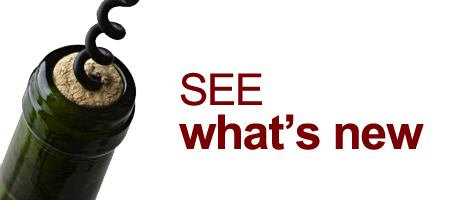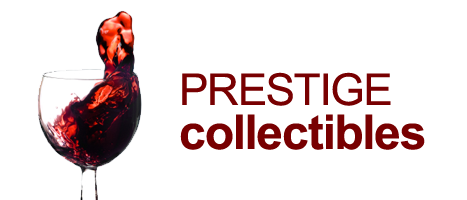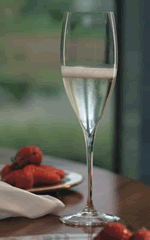|
|
Riedel Grape Series Champagne Glass (twin pack) (6404/28)
|
|
|
From its beginnings in northern Bohemia down to this day, for 11 generations and 250 years, Riedel Glass has stood for the high art of glassmaking. So much more than mere receptacles, Riedel decanters and glasses are imbued with the idiosyncrasies of the wine they are charged to accentuate, turning wine consumption into a graceful, prosaic experience.
The Riedel glass designs are based on the exceptional characteristics of each grape variety, which in turn determines the shape, size and rim diameter of the bowl.
The latest machine blown technology, in conjunction with the seamless pulled stem, offers a special design feature, which creates an indent on the bottom of the bowl, reflecting the light and adding another dimension to the lively color of wine.
Champagne in a paragraph (or three): Although wines were known from the Champagne region of France - thanks to Roman keenness – as far back as 4th Century AD, it was not until the 17th Century that the méthode champenoise (second fermentation – bubbles!) was first documented. Wishing to emulate the success and reputation of their southern countrymen in Burgundy, Champenois winemakers struggled to counter their northern climate, which produced immature grapes and thinner bodied, low sugar content red wines. At some point in the mid 17th Century, the method of adding extra sugar and allowing secondary in-bottle fermentation developed; this often resulted in bottle explosion, however, inspiring the term ‘Devil Wine’ to enter the lexicon.
Although the Benedictine Monk Dom Perignon did not invent Champagne, he did develop many of the techniques that eventually led to the specific and deliberate production of sparkling wine, including holding the cork in place with a wire collar (muselet) to withstand the fermentation pressure. It wasn’t until the 19th Century, however, that Champenois winemakers begun to utilise the technique on a broad basis, fully two hundred years after the first ‘Devil Wine’. And it would be another century before they reduced the sugar content further, thus producing a drier sparking wine and the template upon which all modern Champagne is based.
Although Champagne is a white wine, made primarily from Chardonnay grapes, it is common for Pinot Noir grapes to also be used. Due to the absence of skin contact and the gentle pressing of grapes during fermentation, these dark skinned grapes produce a white wine too, whilst also contributing length and character. And if you want to call your sparkling wine Champagne, you better have a good lawyer. The use of the terms Champagne and méthode champenoise, have been protected by international law for decades. The French even go as far as controlling production of the wine in their own back yard, regulating everything from pruning to pressing, so to protect the value and integrity of the brand.
Tell a friend
|
|
|
|
Customers who bought this product also bought |
|
|
|
|
|
|








